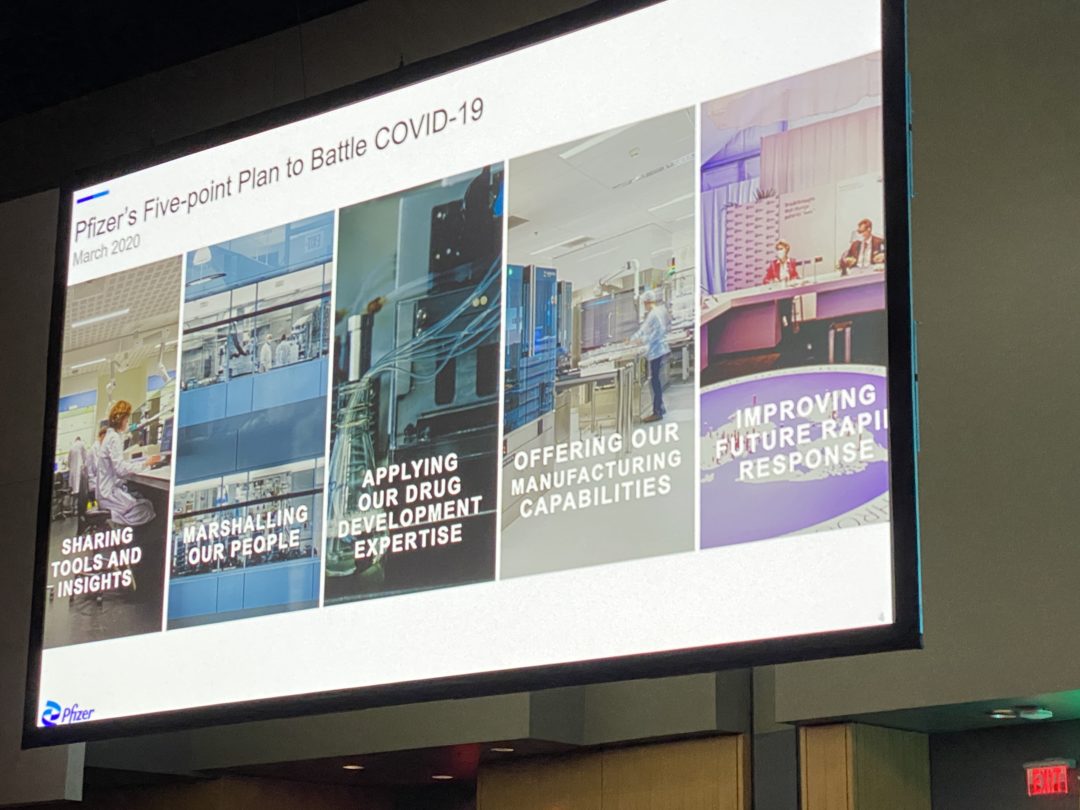Pfizer’s supply chain miracle
CSCMP conference keynote speaker outlines challenges and innovations involved in creating the distribution and manufacturing network for the COVID-19 vaccine.

The development of the COVID-19 vaccine in nine months has been hailed as a medical miracle. Just as much of a miracle? Building the supply chain that manufactures and distributes that vaccine.
Jim Cafone, vice president of strategy and business operations for Pfizer, detailed the challenges the company faced and the innovations it created at the opening keynote session for the Council of Supply Chain Management Professionals (CSCMP) annual EDGE conference.
From the beginning of the pandemic, Pfizer’s focus was on collaboration and how the company could contribute to eradicating the pandemic, said Cafone. “We never used the word ‘compete,’” said Cafone. “We were willing to share our tools and insight with anyone we could.”
This commitment to collaboration included a willingness to share Pfizer’s significant global manufacturing capacity and being open to review any opportunities out there. “Within six to eight weeks, we looked at 200 to 300 different opportunities,” said Cafone.
One of the most promising was using mRNA technology developed by BioNTech. Pfizer quickly signed a letter of intent to work with BioNTech to help develop the vaccine.
However, the choice to focus on using mRNA technology posed several critical supply chain challenges for Pfizer. For example, at the time, none of Pfizer’s plants used mRNA technology, so they did not have in place any of the tools or processes that would be needed for large-scale manufacturing of the vaccine. Additionally, suppliers of crucial materials, such as lipids, were not used to handling the volumes that would be needed for a global vaccination effort. Finally, Pfizer did not have a distribution system in place that could ship the vaccine at the required -90 to -60 degrees Celsius.
Need for speed
In spite of these critical challenges, Pfizer’s top executives stressed the need for speed. “Gone were governance meetings and PowerPoint presentations,” said Cafone.
Instead, decisions were made in a rapid-fire fashion and traditional timeframes were crunched. For example, instead of developing the new manufacturing process in a standard, serial fashion, all of the stages occurred in parallel—process understanding, scaling, and design and fabrication all happened at the same. This reduced the creation of the manufacturing process from 24 months to six.
Additionally, instead designing a traditional large scale manufacturing operation involving 12,000-liter tanks and large pipes, Pfizer miniaturized the operation, creating what is essentially a “manufacturing plant in a box” that can be stored in a rack.
Pfizer also quickly developed a thermal shipper box that could keep the product stable for 10 days and be shipped to remote locations. This box is less than 50 pounds, is easy to pick and pack, and is reusable. In fact, 75% of the boxes have been returned and can be used again to ship more vaccines.
Now, having shipped more than 1.5 billion doses of the vaccine in less than a year, Cafone and his supply chain colleagues face a new challenge.
“There’s no going back now,” explained Cafone. “We’ve proven that we can get a medical miracle to market in nine months. What else can we do?”
Related Articles
Copyright ©2024. All Rights ReservedDesign, CMS, Hosting & Web Development :: ePublishing